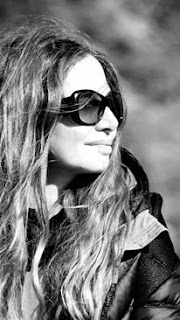We're back in the world of Ed and Lorraine Warren, real life ghost hunters transformed by Wan into the significantly more photogenic Patrick Wilson and Vera Farmiga, the latter who manages levels of emotion rarely seen in this genre of film making. It's 1977 and the Warrens are recovering after their time spent trying to exorcise the murderous demon lurking in a certain house in Amityville. Come to think of it, they got their invitation to 'a house in Long Island' at the end of the first movie, set in 1971, so does that mean they were there for six years?
Meanwhile across the water something's stirring in Green Street, Enfield, England - the events leading to the now infamous 'Enfield Poltergeist' story are starting to happen. Like The Conjuring's depiction of the plight of the Perrons in Rhode Island, the sequel is also based on a true story - the haunting of a north London Council house by the spirit of a dead man, Bill Wilkins, and the physical effects on the Hodgson family resident at the time. It's a story that's been referenced as long ago as 1992 in the superlative BBC production Ghostwatch, and more recently in When the Lights Went Out (2012) and directly in last year's three part drama The Enfield Haunting.
 So the Warrens are looking for some R&R time, but when they are played a tape of an old man's raspy voice and told that the speech actually came from the mouth of an 11 year old girl - the youngest Hodsgon child Janet - they're on the plane to Enfield, and discover that beneath the haunting there's something even scarier which links to one of their earlier cases, and which directly threatens the couple.
So the Warrens are looking for some R&R time, but when they are played a tape of an old man's raspy voice and told that the speech actually came from the mouth of an 11 year old girl - the youngest Hodsgon child Janet - they're on the plane to Enfield, and discover that beneath the haunting there's something even scarier which links to one of their earlier cases, and which directly threatens the couple.As a director James Wan has always been able to press the audience's buttons as efficiently as, say, Hitchcock, but I've always found this talent to be slightly undone by pacing issues. The Conjuring 2 is a masterclass in 'the jump', and whereas in some films overexposure to this trick breeds ennui, this movie paces itself so perfectly that the tension doesn't let up for more than a few seconds of its two hour running time (Ed's acoustic rendition of Elvis's 'Always on My Mind' notwithstanding). It's that scary that I saw it on my own in a large cinema and consider it a badge of honour that my fingers didn't flutter in front of my eyes once.
While the story and setting are pretty accurate - it's a mark of his skill that he's taken the actual events (which have the whiff of hoax about them) and turned them into something far scarier - Wan isn't afraid to take a few risks with his plot and visuals (he also plays fast and loose with the architecture of the English Council house - basement with running water, floorboards with no joists anyone?). This provides some visual variety in a film which doesn't have a complex plot, but the director for once spends as much time with the characters as what he wants to show us, even allowing him to stray into Spielbergian territory for the final reel.
 There is some top notch acting going on here. I've already mentioned the emotional range of Vera Farmiga, but Simon McBurney is note perfect as friend of the family Maurice Grosse, and US born Madison Wolfe as Janet Hodgson is also a standout. I was astounded that he managed to get such accurate 'estuary drawl' accents from Wolfe and Australian Laura Esposito (playing Janet's sister Margaret), although in the moments when those accents slipped I was slightly taken out of the story and left musing on why it wasn't possible to cast UK kids.
There is some top notch acting going on here. I've already mentioned the emotional range of Vera Farmiga, but Simon McBurney is note perfect as friend of the family Maurice Grosse, and US born Madison Wolfe as Janet Hodgson is also a standout. I was astounded that he managed to get such accurate 'estuary drawl' accents from Wolfe and Australian Laura Esposito (playing Janet's sister Margaret), although in the moments when those accents slipped I was slightly taken out of the story and left musing on why it wasn't possible to cast UK kids.It's a sign of how good this film is that at the end I both wanted and didn't want The Conjuring 3. I really want to meet Ed and Lorraine again, but I fear the franchise even more than some of the things I saw on screen over the last couple of hours.














